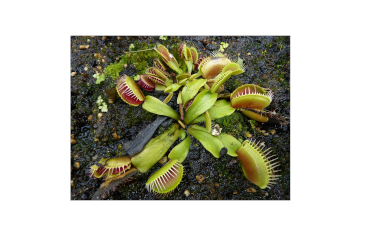- Series:God’s Design, Plants, Transcript English
Psalm 9:10
“And those who know Your name will put their trust in You; for You, LORD, have not forsaken those who seek You.”
 Algae are among the world’s premier plants. Scientists never expected to find an alga that feeds like a Venus flytrap. So biologists were surprised to discover that a common type of lake alga not only feeds itself through photosynthesis, it also eats bacteria.
Algae are among the world’s premier plants. Scientists never expected to find an alga that feeds like a Venus flytrap. So biologists were surprised to discover that a common type of lake alga not only feeds itself through photosynthesis, it also eats bacteria.
Scientists studied the alga’s feeding habits using fluorescent latex beads about the size of bacteria. That way they could learn how many bacteria the alga would eat and what happens to the bacteria after it’s eaten. They learned that an average alga will eat 36 bacteria in an hour. In other words, an alga will eat as much as one‑third of its weight in bacteria every day. Scientists have also discovered two other species of alga that eat bacteria, but at only one‑sixth the rate of the common lake alga. How do the immobile algae capture bacteria? The cells of the alga share a fibrous casing with flagella that extend through the top of the casing. The flagella force water into the casing, and along with it, bacteria. Once the bacterium is trapped in the casing, it is engulfed by the cell.
The ability to eat bacteria is important for the alga’s existence. Like the bogs where most carnivorous plants live, clean, clear lake water is low in plant nutrients. Therefore, in each instance, the ability to eat animal life provides needed additional nutrients. In addition, bacteria are kept at safe levels for other creatures.
Unknown until recently, bacteria‑eating algae are an important major link in a lake’s food chain. We can be thankful that our Creator is wiser than even our best scientists.
Prayer: Dear Father in heaven, I thank You that Your wisdom is above all human wisdom and that You have used Your wisdom so lavishly in the world. Help me to be less trusting of human wisdom as I learn more of the excellence of Your wisdom. In Jesus’ Name. Amen.
REF.: Miller, Julie Ann.1986. Lake algae dine on bacteria. Science News, v. 129, Feb. 1. p. 71. Photo: Venus fly trap by Lynn B. Pixabay.com
© 2023 Creation Moments. All rights reserved.
